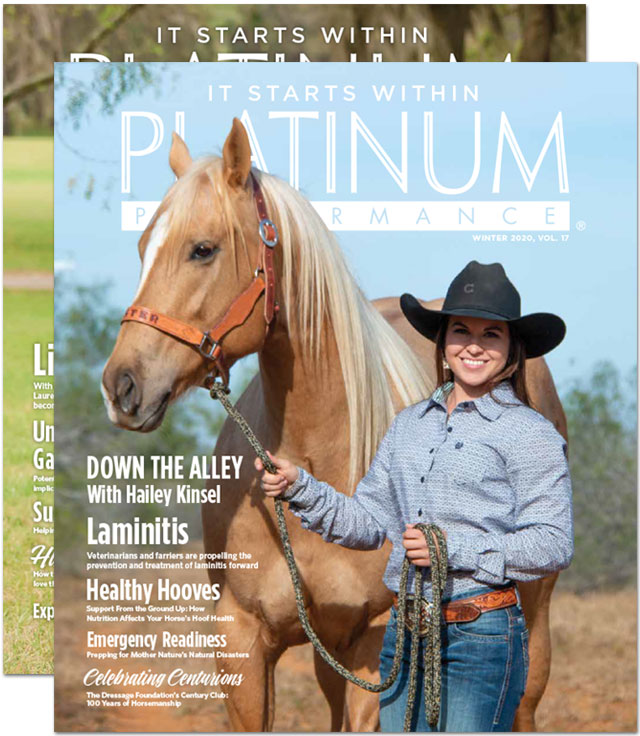San Bernardino Search Dog Team
The San Bernardino County Sheriff Department's search dog team in California has evolved into one of the nation’s elite search and rescue units, saving lives with incredible skill and dedication
We’ve all seen it. Sitting helplessly in the comfort of our living rooms, watching with angst as the evening news relays the story of children lost in the woods or hikers with whom loved ones have lost contact. While we pray for their safe return, the men and women of various search and rescue teams have donned their orange uniforms, hoisted their heavy packs and set out into the elements with their specially-trained canine partners. They have one mission: search, find and return the lost subject home. These are volunteers, endlessly- dedicated individuals with expansive hearts and a steely focus on achieving the goal at hand. The members of the elite San Bernardino Sheriff’s Department Search Dog Team have redefined the practice of canine search and rescue, building one of the foremost programs in the country and becoming the go-to resource for missions in San Bernardino County, California, and farther into other counties and states. They’re heroes, plain and simple, and together both dogs and handlers have achieved remarkable results.
“We have 18 teams within San Bernardino County Sheriff Department Volunteer Forces Station that specialize in technical rope rescue, high alpine rescue, desert rescue, mounted equine searches, the search dog team and a specialty water rescue and scuba diving team.”
— Margo Machen, DVM Commander of the San Bernardino Sheriff’s Department Volunteer Search Dog Team
The Science of Search and Rescue
The San Bernardino Sheriff’s Department Search and Rescue program was initiated some twenty years ago to meet a critical need. Sheriff’s Department Deputies, while extensively trained and invaluable at protecting the public, lacked the man power and specialized training necessary to conduct search and rescue missions. Required to offer the service, the Sheriff’s Department began forming specially- trained volunteer teams that could offer greater expertise and increase the odds of a successful outcome. San Bernardino County, in particular, recognized the value of such search and rescue teams as vital to public safety in an active county with a variety of environments that range from desert to alpine terrain. “We have 18 teams within San Bernardino County Sheriff Department Volunteer Forces Station that specialize in technical rope rescue, high alpine rescue, desert rescue, mounted equine searches, the search dog team and a specialty water rescue and scuba diving team,” explains Dr. Margo Machen, a veterinarian by profession and Commander of the San Bernardino Sheriff’s Department Volunteer Search Dog Team. “Our county is considered one of the leaders in the United States in terms of search and rescue and how we run our operations,” she says.
Dr. Machen is quick to give credit where it is most certainly due and attributes much of her team’s success to both the dedicated handlers and search dogs, as well as the Sheriff’s Department, which is a tireless advocate for the program. “Our handlers fall into four different classifications,” she explains. “Applicants are not sworn in yet and still have to complete certain criteria to become part of the team,” she says. “They have to go through an interview process and a background check since we’re sworn civilian volunteers with the Sheriff’s Department.” After an Applicant is approved and sworn in, they then become known as a Trainee. “Trainees are individuals who have joined the team with or without dogs and have decided they either want to be handlers or support members for handlers. Support members accompany handlers to maintain safety standards and command post operations when the dogs are deployed.” Trainees who begin the process of training a dog for search dog work are then classified as Apprentice Handlers. “Apprentice Handlers have three specific core disciplines they can train their dogs in, wilderness airscent, trailing and human remains detection (HRD)” explains Dr. Machen. The fourth and final stage is realized when a search and rescue team member becomes a Certified Handler. “Certified Handlers and their dogs have been vetted by other Certified Handlers on the team and must pass a series of tests and a final evaluation, which is critiqued by both an internal evaluator and an external evaluator that has been certified in that discipline and deploying for no less than five years. Once a team member is classified as a Certified Handler in a core discipline, they are deployable on missions,” says Dr. Machen. It can take up to two years of rigorous training for a search dog team to become certified, accumulating upwards of 700 training hours per year. Some of the dog teams are dual certified in two core disciplines or a team-designated supplemental discipline. As volunteers, handlers shoulder the expense of training and equipment for both themselves and their dogs, which can range between $5,000 to $10,000 annually.
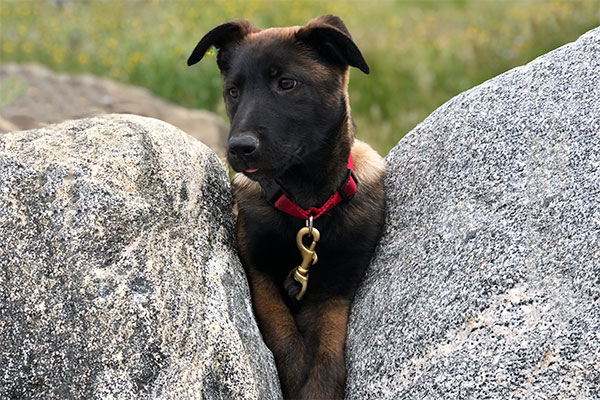
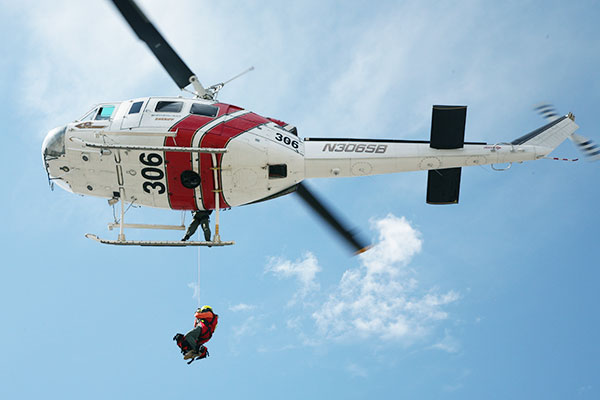
Specialized Disciplines
It’s important to note that although search and rescue teams are comprised of volunteers, these are highly-trained handlers and dogs with regimented protocols and a deadlock focus on the mission. Not just any dog has what it takes to become a deployable search dog. Handlers are looking for specific criteria that helps ensure the dog possesses an innate drive. “There are two types of drive, prey drive and hunt drive,” explains Dr. Machen. “Prey drive is what you see in a lot of the pointy-eared breeds. They see something, they chase it and they either attack it or play with it. In contrast, hunt drive is the drive to find something, and that’s what we’re looking for. It’s a higher form of drive because it’s not initiated visually. That animal has to want to get to its end target despite distractions or longevity of focus.” Dogs with a high hunt drive want to find their target at all costs and are typically the dogs chosen for search and rescue and police detection dogs. They don’t quit until the mission is complete. The dog’s hunt drive is molded through training to fit their specific discipline or disciplines. At the end of training or a mission, the dog is rewarded for their success and trained to crave that reward. “In our case, depending on what the discipline is, that end target could be human remains detection (HRD), wilderness area live-find or tracking and trailing. Those are our three primary core disciplines,” says Dr. Machen. “Alongside our core disciplines, we have other supplemental disciplines that handlers certify in, but it is required that each dog be certified in a core discipline.”
Though search and rescue teams give everything they have to achieve a successful and happy outcome, not all missions end as hoped. In those cases, HRD dogs are called upon for their specialty training in human remains detection. Though grim, it’s a necessary skill used not only in search and rescue but also in criminal investigations. “The dogs that are HRD certified in our department usually average anywhere from 2-5 deployments per month. That’s a very high amount, and sometimes it can be higher,” explains Dr. Machen of the sad and all-too frequent task.
Area Wilderness Dogs (AWD) stand as the second core discipline within the department. “These dogs are used to identify any living human being within their assigned search area,” says Dr. Machen. “The dogs are usually not scent-specific, meaning that we don’t give them a target odor that they go and match with that individual who is out there. They’re used in a sector where there are no other searchers or the only searcher is with the dog. The dog is then tasked to clear that sector and identify lost subjects.” AWD are highly effective in low visibility situations, in dense foliage or brush, in snow, blizzard or avalanche situations and particularly at night, when humans can see only as far as their flashlight beam. “AWD dogs are best used when placed in areas where there’s a high probability of detection,” Dr. Machen explains. The final core discipline is tracking and trailing, in which the dog is presented with a specific scent of the missing person, and they will scent-discriminate and only follow that person despite how contaminated the environment may be with other human odor. Dr. Machen explains the difference as “Tracking is putting the dog’s nose down and following footstep-to-footstep with what’s called ground disturbance. Trailing, on the other hand, is using both a tracking ground disturbance technique and air scent, but the dogs are scent-specific.” While trailing, the dogs will utilize whatever asset is available to follow scent, whether that be air scent or ground disturbance. These dogs are investigators, connecting the dots instead of following one straight line. “If I walk across a freshly mowed field or tall grass, you can visually see my footprints as they go across the grass,” Dr. Machen says, painting a picture of a tracking dog’s methodology. “That dog will usually stay pretty close to where I walked.” In contrast, a trailing dog puts a puzzle together using a wider area. “If I walk across an asphalt parking lot on a hot day and there’s some brush three or four hundred feet away and the wind is blowing toward that brush, my scent may have burned off of the asphalt and is caught in that brush,” says Dr. Machen. “That dog may go two or three hundred feet away from where I walked in order to detect a person’s odor that has been captured along the brush, then if the person they are trailing steps back onto grass the dog may go back to the footsteps, all the while connecting the dots and following the person’s scent to find their subject.”
Specialized Training Yields Results
In addition to the vital core disciplines within the San Bernardino County Sheriff’s Department Search Dog Team, there are numerous handlers and dogs certified in supplemental disciplines that play a critical role in the successful outcomes the program achieves. One such discipline is Urban Disaster Dogs (USAR) certified by FEMA. Though these dogs are certified and governed at a federal level, they are used for local disasters as well; such as building collapses and search areas that contain a lot of alcoves and small spaces, such as schools and business complexes. On a national level, USAR dogs have contributed greatly to disasters like 9-11 and the Montecito and Oso mudslides where they tirelessly searched through large debris fields both man-made and created by mother nature. They’re exceptionally talented in tight spaces and used for intricate missions. “Sometimes we’ll even use them in wilderness situations where we have large boulder fields because they’re so agile on uneven surfaces,” says Dr. Machen.
Another supplemental discipline is Human Remains Detection in Water. “These dogs are extremely accurate in water, they have upwards of 89 percent accuracy in identifying a person within ten feet when the subject is in the water,” she says. Once a handler and dog become HRD certified for ground, they can move on to become certified in water as well, assisting in lake and river drownings.
While the search and rescue team is comprised of sworn volunteers, they are heavily relied upon by law enforcement to assist in criminal cases as well. “Criminal Investigative Detection Dogs are brought in after a crime has been committed to identify evidence related to a crime scene,” explains Dr. Machen. Dogs on the team are dual-certified in a core discipline and supplemental discipline and trained to identify a variety of evidence that includes articles, firearms and ammunition and digital media.
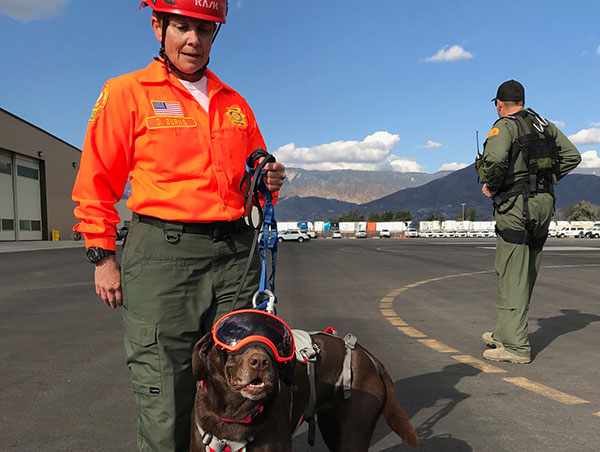
Search and rescue team members dedicate between 500-800 hours each year to maintaining their skills and those of their dogs in training.
COURTESY PHOTO
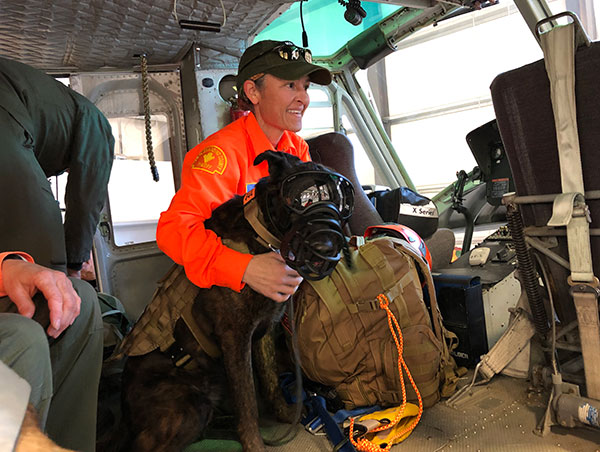
Search and rescue team members are volunteers who are willing to leave their families and lives to go help a stranger in need.
COURTESY PHOTO
Maintaining Valuable Assets
Certified search and rescue dogs are high value working dogs and beloved partners to their handlers. They’re cared for to an extremely high degree and widely respected by law enforcement and the public for whom they serve. Handlers personally spend thousands of dollars on veterinary care, food, supplies, specialty gear and safety equipment for their dogs, ensuring their dog has precisely what it needs to complete its mission and stay safe while deployed. From harnesses for frequent helicopter insertions to high-visibility collars, climate-specific gear and life vests, the dogs are outfitted for success.
When it comes to the dogs’ food, supplements and wellness care, handlers recognize their animals are elite athletes and thus have specific needs. “We try to preserve our dogs’ energy so we can use it up in the search area,” says Dr. Machen. “When we have to hike five miles to our search area you can imagine what that does to both the dogs and the searchers. The dogs and their handlers have to be fit enough to do the work, and the dogs are cared for extremely well. They see veterinarians on a regular basis, they get their teeth done, they get flea and heartworm prevention, vaccinations and much more. We travel all over the United States, and they have to have health certificates and mission letters from the Sheriff’s Department, so they can travel in-cabin on the airplanes with us,” she says. “Nutritionally, these dogs are very lean, they don’t look like your average pet. We keep them lean because of heat and their physical requirements. The dogs are fed a high-quality diet and supplements are extremely important because most dog foods are deficient in certain nutrients, and the dogs also require joint support. For that, the dogs receive Platinum Performance® supplements everyday. “We have been using Platinum Performance® CJ for the past seven years for all our certified dogs,” says Dr. Machen. She and her teammates go to great lengths to ensure that both they and their dogs are fit, healthy, trained and certified extensively, so they’re ready when called upon. “We do everything we can to make sure our dogs are at peak performance. We never know when we’ll be called out. When I have a certified deployable asset, then that animal cannot be unprepared,” she insists.
Never Say ‘Quit’
Dr. Machen, her teammates and their canine partners that comprise the San Bernardino Sheriff Department Search Dog Team are the type of organization that silently changes lives. We don’t realize exactly how valuable they are until we need them, until our lives or those of our loved ones are saved thanks to their dedication. They’re passionate, driven and willing, at a moment’s notice, to put their own comfort and safety on the line to find the lost. “It’s hard to put it into words,” says Dr. Machen. “There’s a humanity to it that’s very hard to describe. Search and Rescue for me is my way to connect with humanity and serve mankind utilizing very specific skills that connect the volunteers to each other as a team.” The work is immensely rewarding, yet at the same time, the team takes with them the emotional scars of their missions. They relish in extreme highs but also carry the weight of heartbreak when their mission is recovery rather than rescue or when what began as a rescue mission ends with sadness. They’re volunteers; there’s no paycheck for doing what they do, and those they seek to find are never charged for their rescue. They dedicate between 500- 800 hours each year to maintaining their skills and those of their dogs in training. To them, however, it’s all a small price to pay for the difference they make. “The thrill of bringing someone home alive or just bringing someone home even if they’re deceased, that doesn’t happen if we’re not there to do it,” says Dr. Machen, a sense of duty in her voice. “We had a small child that ran away from home in the middle of the night because of some extenuating circumstances, and Dillon, my black lab, tracked him and found him hidden underneath a tarp in the back yard of a house,” she remembers emotionally. “The boy was terrified and wouldn’t talk to myself or the deputies, but he sat down on a curb with Dillon, who was just a year old. Dillon never sat still at that age, but he lay next to that child and the boy told Dillon what had happened to him and why he ran away. Dillon just sat there and let the child talk. He had never sat still like that, but he knew it was needed. That’s what solidified my commitment and passion for this.”
Next time you see the story of a lost hiker, a child who has wandered away or a natural disaster where people are alive, scared, helpless and trapped, think of the volunteers that have left their families, home and work with their four legged partners to risk themselves for strangers who are in need of help. They give without recognition, and that’s OK with them. Their reward is a job well done, a reunited family or simply the look of utter joy and relief on the face of a lost person when they see a wagging tail and a friendly face coming their way. It’s noble work, pure and simple. “When our county’s Search and Rescue teams ramp up, it’s a force to be reckoned with,” says Dr. Machen. “We don’t quit, we keep going until you’re found.” The universal search and rescue motto is ‘So that others may live.’ “I have the privilege of working side-by-side with an incredible group of volunteers that embody this motto heart, mind and soul.”

by Jessie Bengoa,
Platinum Performance®

